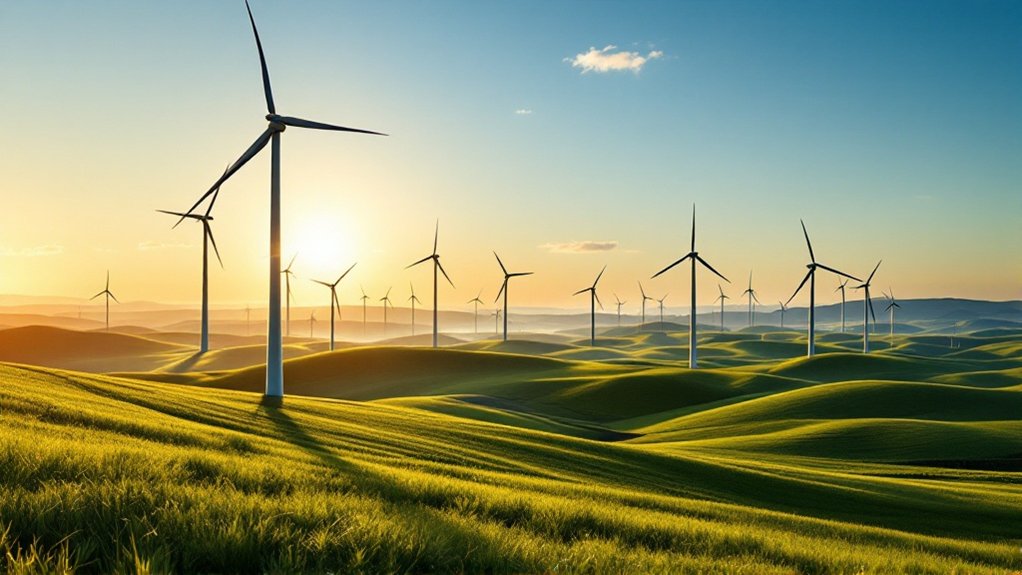
Unleashing the Potential of Smart Wind Turbine Designs
The advancements in wind turbine technology signify a pivotal moment in renewable energy. Smart wind turbines, equipped with IoT capabilities and AI algorithms, present opportunities for significant improvements in efficiency and output. These innovations promise to transform the sector, yet the implications of such technology extend beyond mere energy production. What challenges and opportunities lie ahead as these systems become more integrated into our energy landscape?
The Evolution of Wind Turbine Technology
Over the past few decades, significant advancements have transformed wind turbine technology from rudimentary designs into sophisticated energy-generating systems. Early models were characterized by limited efficiency and high operational costs, relying on simple mechanical components. As research and development progressed, innovations such as advanced materials and aerodynamics emerged, leading to larger and more efficient turbines. The introduction of computer modeling and simulation also played an essential role, enabling engineers to optimize turbine designs for various wind conditions. Additionally, improved manufacturing processes reduced costs and increased scalability. These developments have not only enhanced energy output but have also contributed to the overall reliability and longevity of wind turbines, positioning them as a critical component of the global renewable energy landscape. Furthermore, the rise of renewable energy represents a transformative shift in the global energy landscape, underscoring the importance of wind power in the transition to sustainable solutions.
Key Features of Smart Wind Turbines
As wind energy technology continues to evolve, smart wind turbines incorporate key features that enhance their efficiency and operational effectiveness. One significant feature is advanced sensors, which monitor environmental conditions, turbine performance, and mechanical health in real-time. These sensors enable predictive maintenance, reducing downtime and maintenance costs. Additionally, smart wind turbines are equipped with adaptive blade pitch control, allowing them to optimize energy capture based on wind conditions. Enhanced communication systems facilitate seamless data exchange, enabling remote monitoring and control. Moreover, integrated energy storage solutions allow for better management of energy supply, balancing generation with demand. Together, these features contribute to improved performance, increased energy output, and a more sustainable approach to harnessing wind energy. Furthermore, the adoption of renewable energy sources, such as wind power, is essential for reducing overall carbon emissions and promoting environmental sustainability.
The Role of Artificial Intelligence in Optimization
While traditional wind turbine operations rely on fixed algorithms, the integration of artificial intelligence (AI) greatly enhances enhancement processes. AI enables real-time data analysis, allowing turbines to adapt to changing wind conditions and improve energy efficiency. By employing machine learning algorithms, these systems can predict ideal blade angles and rotor speeds, thereby maximizing energy capture. In addition, AI can analyze historical performance data to refine operational strategies, ensuring that turbines operate at peak efficiency under varying environmental conditions. This dynamic approach not only increases energy output but also contributes to the overall longevity of turbine components. Ultimately, AI-driven optimization represents a significant advancement in the efficiency and reliability of wind turbine operations, paving the way for a more sustainable energy future. Furthermore, AI-powered imaging technologies can enhance the monitoring of turbine health, helping to identify potential issues before they lead to significant failures.
Predictive Maintenance and Its Benefits
Predictive maintenance plays an essential role in enhancing the operational efficiency of wind turbines. By utilizing data analytics, it enables significant cost efficiency improvements and effective downtime reduction strategies. This proactive approach not only minimizes unexpected failures but also optimizes maintenance schedules for better resource management. Additionally, implementing predictive maintenance contributes to a healthier work-life balance, as it reduces stress levels associated with unplanned outages and enhances overall productivity.
Cost Efficiency Improvements
Smart wind turbines increasingly incorporate predictive maintenance strategies to enhance cost efficiency. By utilizing advanced sensors and data analytics, these systems can monitor turbine performance in real-time and identify potential issues before they escalate. This proactive approach reduces the likelihood of unexpected failures, thereby minimizing repair costs and avoiding extensive downtime. In addition, predictive maintenance enables operators to schedule maintenance during less impactful times, leading to optimized resource allocation and reduced labor expenses. The insights gained from data analytics can also inform better inventory management, ensuring that necessary parts are available when needed without overstocking. Overall, these cost efficiency improvements contribute to the sustainability and profitability of wind energy operations, making smart turbine designs more economically viable.
Downtime Reduction Strategies
An increasing number of wind energy operators are adopting downtime reduction strategies through predictive maintenance, which greatly enhances turbine reliability. This approach utilizes advanced data analytics and sensor technologies to monitor turbine conditions in real-time, identifying potential failures before they occur. By analyzing performance data, operators can schedule maintenance only when necessary, reducing unnecessary downtime and associated costs. Predictive maintenance not only extends the lifespan of components but also optimizes operational efficiency, allowing turbines to generate energy more consistently. Additionally, this strategy minimizes the environmental impact by reducing the frequency of maintenance trips, thereby promoting sustainability in wind energy operations. Ultimately, predictive maintenance emerges as a crucial component in maximizing the productivity and reliability of wind turbine systems.
Enhancing Energy Output Through Advanced Sensors
While traditional wind turbines rely on basic mechanical systems for operation, the integration of advanced sensors has revolutionized energy output capabilities. These sensors monitor real-time data, including wind speed, direction, and turbine performance, allowing for immediate adjustments to optimize energy capture. By employing sophisticated algorithms, the turbines can dynamically adapt their blade angles and operational settings based on environmental conditions. This responsiveness not only enhances efficiency but also minimizes wear and tear on components, leading to longer equipment lifespans. Additionally, predictive maintenance enabled by sensor data helps to identify potential issues before they escalate, further ensuring maximum energy production. Overall, advanced sensors play an essential role in transforming wind energy into a more reliable and efficient source of power. Practicing mindfulness techniques can also contribute to a more focused approach in managing and operating these advanced systems effectively.
Case Studies: Successful Implementations of Smart Wind Turbines
Innovative implementations of smart wind turbines across various regions demonstrate the significant advancements in wind energy technology. For instance, a project in Denmark showcased turbines equipped with predictive maintenance systems, reducing downtime and enhancing operational efficiency. Similarly, a wind farm in Texas utilized real-time data analytics to optimize energy output, ultimately increasing production by 20%. In Germany, smart turbines integrated with IoT devices monitored environmental conditions, enabling adaptive control strategies that improved performance during varying weather scenarios. These case studies highlight how intelligent designs contribute to more reliable and efficient energy generation, paving the way for the broader adoption of smart technologies in the renewable energy sector. Such advancements illustrate the transformative potential of smart wind turbine systems in global energy solutions.
The Future of Wind Energy: Trends and Innovations
As the demand for sustainable energy solutions continues to rise, the future of wind energy is poised for remarkable transformation driven by emerging trends and technological innovations. Key advancements include the integration of artificial intelligence and machine learning, enabling predictive maintenance and optimization of turbine performance. Additionally, the development of larger, more efficient turbine designs promises increased energy output and reduced costs. Innovations in energy storage technologies, such as advanced batteries, will facilitate better integration of wind energy into the grid. Moreover, offshore wind farms are expanding rapidly, harnessing stronger and more consistent winds. These trends collectively indicate a shift toward more resilient, efficient, and sustainable wind energy systems, positioning the sector for significant growth in the coming decades.
Frequently Asked Questions
How Much Do Smart Wind Turbines Cost Compared to Traditional Ones?
The cost of smart wind turbines typically exceeds that of traditional models due to advanced technology and features. However, their increased efficiency and energy output can offset initial investments, making them financially viable in the long term.
What Are the Environmental Impacts of Manufacturing Smart Wind Turbines?
The environmental impacts of manufacturing smart wind turbines include resource extraction, energy consumption, and waste generation. These factors contribute to carbon emissions and ecological disruption, necessitating careful consideration to balance innovation with sustainability in production processes.
How Long Do Smart Wind Turbines Typically Last?
Smart wind turbines typically have a lifespan of 20 to 25 years, depending on factors such as design, materials, maintenance, and environmental conditions. Regular upkeep can enhance their efficiency and longevity in energy production.
What Skills Are Needed for Operating Smart Wind Turbines?
Operating smart wind turbines requires a blend of technical skills, including proficiency in software analysis, mechanical understanding, problem-solving abilities, and familiarity with electrical systems. Additionally, effective communication and teamwork are essential for peak performance and maintenance.
Are There Any Government Incentives for Installing Smart Wind Turbines?
Government incentives for installing smart wind turbines vary by region, often including tax credits, grants, and rebates. These financial benefits aim to encourage renewable energy adoption, enhance energy efficiency, and promote sustainable practices in the energy sector.
Conclusion
The advancement of smart wind turbine designs represents a transformative leap in renewable energy technology. By integrating IoT, predictive maintenance, and AI-driven analytics, these turbines not only optimize energy capture but also streamline operations and reduce costs. As demonstrated through various successful implementations, the future of wind energy is poised for significant growth and innovation. Embracing these smart technologies will ultimately lead to a more efficient, sustainable, and reliable energy landscape, benefiting both the environment and energy consumers.



